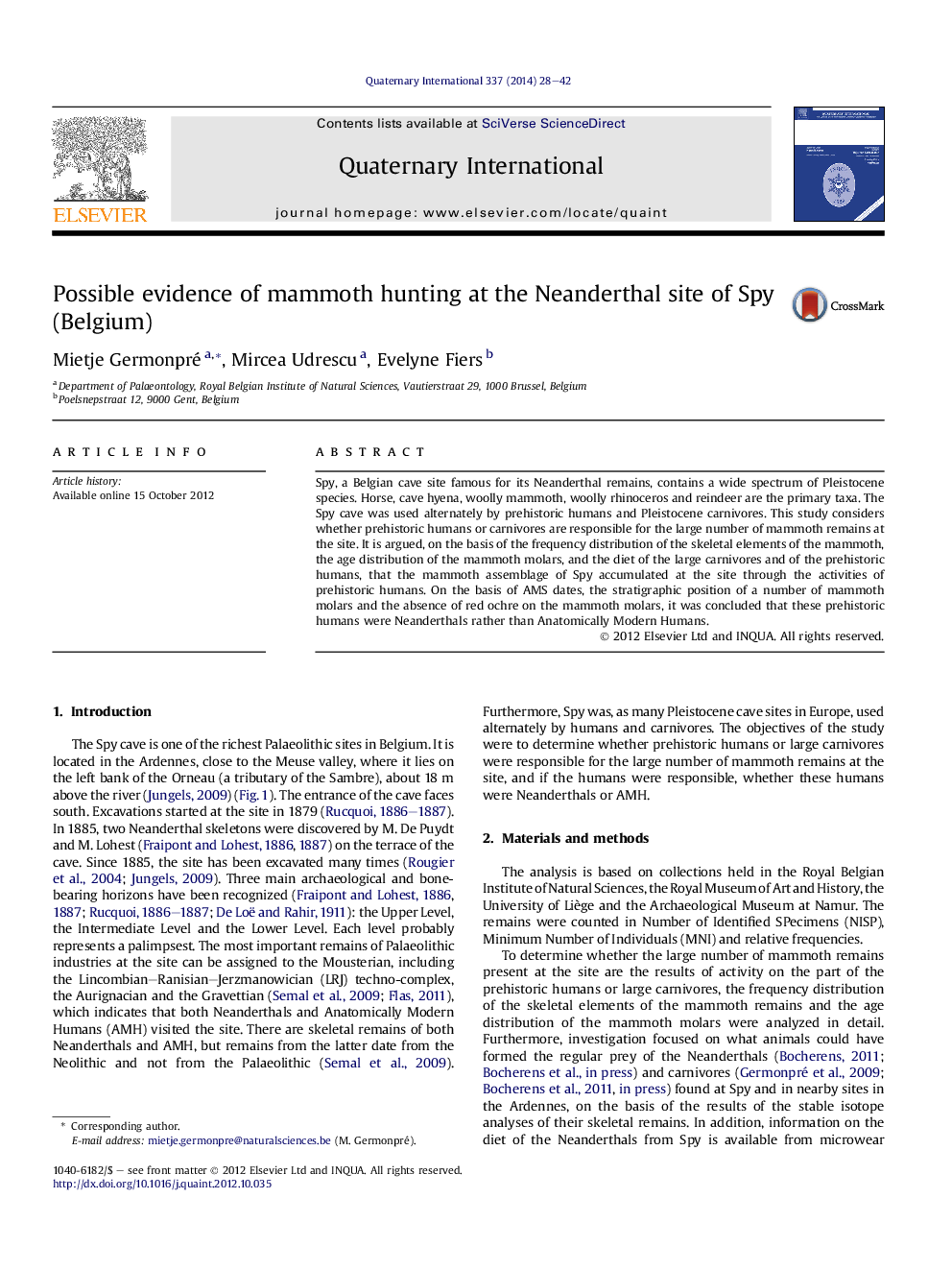| Article ID | Journal | Published Year | Pages | File Type |
|---|---|---|---|---|
| 1041436 | Quaternary International | 2014 | 15 Pages |
Spy, a Belgian cave site famous for its Neanderthal remains, contains a wide spectrum of Pleistocene species. Horse, cave hyena, woolly mammoth, woolly rhinoceros and reindeer are the primary taxa. The Spy cave was used alternately by prehistoric humans and Pleistocene carnivores. This study considers whether prehistoric humans or carnivores are responsible for the large number of mammoth remains at the site. It is argued, on the basis of the frequency distribution of the skeletal elements of the mammoth, the age distribution of the mammoth molars, and the diet of the large carnivores and of the prehistoric humans, that the mammoth assemblage of Spy accumulated at the site through the activities of prehistoric humans. On the basis of AMS dates, the stratigraphic position of a number of mammoth molars and the absence of red ochre on the mammoth molars, it was concluded that these prehistoric humans were Neanderthals rather than Anatomically Modern Humans.
